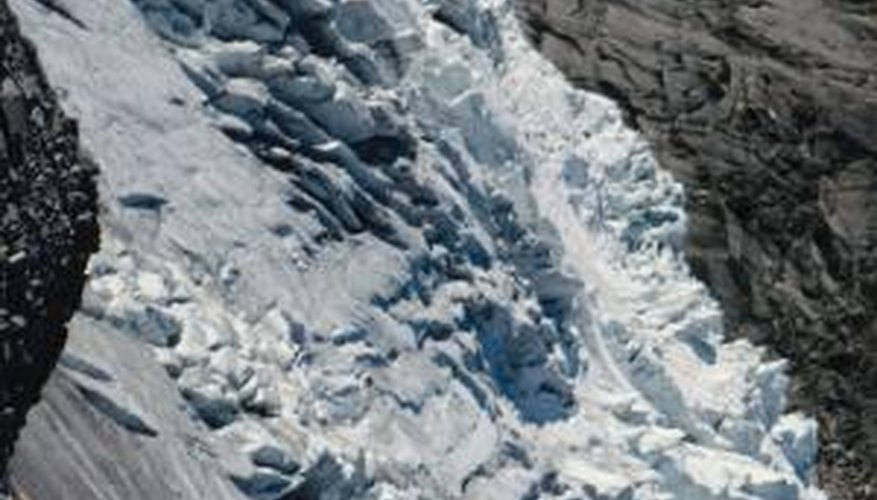Especially in the winter months in the mountains, avalanches can send a large amount of snow barrelling down the mountainside at up to 80 miles per hour. While many people focus on the negative effects of such a disaster, an avalanche can also have some positive effects on the environment. However, in most cases, the negative impact outweighs the positive impact.
Forest Clearing
One of the few positive impacts of an avalanche is that it clears an area of trees and other obstacles. In the warmer months, land that experienced an avalanche in the previous winter will be clear, which creates a path up the mountain that offers easier travelling for both humans and animals. This helps animals cover ground more easily while hunting and offers better hiking opportunities for visitors to the area. However, the lack of trees makes the area more susceptible to avalanches in future winters.
- One of the few positive impacts of an avalanche is that it clears an area of trees and other obstacles.
- However, the lack of trees makes the area more susceptible to avalanches in future winters.
Effects on Waterways
While an avalanche carries debris down the mountain and into rivers and lakes at the mountain's base, this debris actually benefits the wildlife. At first, rivers and lakes become clouded with debris, but once everything settles, they run clear again. The logs serve as shelter for fish and trap the food the fish eat. The fish also use rocks as breeding grounds. Avalanches that occur naturally tend to have a more positive impact on the rest of the environment than avalanches that are purposely triggered by man.
- While an avalanche carries debris down the mountain and into rivers and lakes at the mountain's base, this debris actually benefits the wildlife.
Risks to Humans
Venturing out on a mountain in the winter can be dangerous. However, some people enjoy skiing, snowboarding and snowmobiling, which require mountains. These people are at the greatest risk of becoming a victim of an avalanche. While there are warning signs for an upcoming avalanche, they can be difficult to predict. People who are caught in the midst of an avalanche find themselves quickly buried. A quick rescue increases chances of survival. According to National Geographic, someone rescued within 15 minutes has a 93 per cent chance of survival, while someone rescued after 45 minutes only has a 20 to 30 per cent chance. After two hours, the chances of survival are very slim.
- Venturing out on a mountain in the winter can be dangerous.
Economic Impact
Because ski resorts and other businesses in the mountains rely on tourists during the winter season, an avalanche can have a negative economic impact. Some avalanches cover roadways and restrict or even stop traffic flow in and out of the area. Ski resorts and other businesses are forced to close until the risk of more avalanches decreases and the roads are cleared. In addition, if conditions are favourable for an avalanche, the resorts and businesses may need to close as a precaution. Those living in these areas can also be cut off from stores and other things they need. Therefore, it is important for these residents to prepare in case an avalanche cuts them off from the rest of the world for a while.
- Because ski resorts and other businesses in the mountains rely on tourists during the winter season, an avalanche can have a negative economic impact.
- Ski resorts and other businesses are forced to close until the risk of more avalanches decreases and the roads are cleared.
